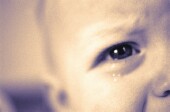Extraocular disease higher among Hispanic children, counties with low socioeconomic status
MONDAY, Oct. 5, 2015 (HealthDay News) — Significant disparities in care and outcomes exist for children with retinoblastoma, according to a study published online Oct. 5 in JAMA Pediatrics.
Bao Truong, M.D., from the Boston Children’s Cancer and Blood Disorders Center, and colleagues conducted a population-based review of 18 Surveillance, Epidemiology, and End Results registries. They examined the effect of socioeconomic status, race, and ethnicity on the extent of disease and outcomes in 830 cases of retinoblastoma in children aged 0 to 9 years.
The researchers found that Hispanic children had a higher percentage of extraocular disease compared with non-Hispanic children (odds ratio [OR], 1.97). Counties with low socioeconomic status indicators had a higher percentage of extraocular cases: higher versus lower poverty status (OR, 1.51); lower versus higher educational attainment (OR, 1.65); higher versus lower levels of crowding, (OR, 2.18); higher versus lower unemployment (OR, 1.72); higher versus lower language isolation (OR, 1.89); and higher versus lower percentage of immigrants (OR, 1.52). Higher rates of enucleation were also seen for low educational attainment, higher level of crowding, and Hispanic origin (ORs, 1.42, 1.81, and 1.41, respectively). Compared with non-Hispanic white children, relative survival at five years was lower among black children (P < 0.001).
“A low socioeconomic status negatively affects disease extent and ocular outcomes, presumably by limiting access to primary and cancer-directed care,” the authors write.
Copyright © 2015 HealthDay. All rights reserved.








